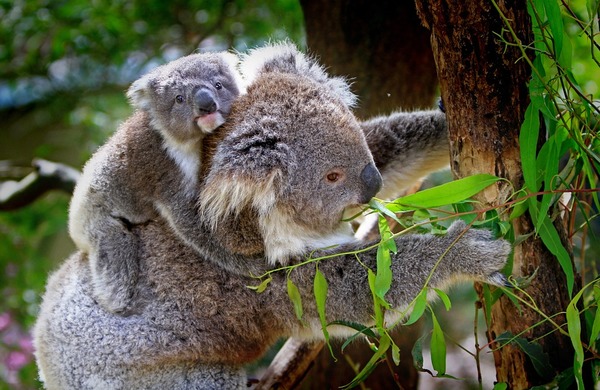The Noosa Biosphere Reserve Foundation (NBRF) hosted a Koala Symposium on Saturday 9 November to identify priority actions needed to bring back Noosa’s wild koala population.
The purpose of the forum was to identify on-ground actions required to support koala conservation, care and research and to close the gap between the good work already being done by various organisations in the Noosa region.
Representatives participating in the symposium included Noosa Shire and Sunshine Coast Councils, University of the Sunshine Coast, Australia Zoo Wildlife Hospital, Landcare, Wildcare Australia SEQ, Koala Tracker, Endeavour Vet Ecology and Queensland Koala Crusaders.
While recent research has provided significant insights, and efforts from local wildlife rescue groups deliver an important management outcome, the future of Noosa’s koala population remains uncertain.
Reported koala population declines of 68 per cent across the greater south-east between 1999 to 2010 are likely to be a trend also experienced locally, with Noosa’s koala listed as vulnerable.
Key threats to the local wild koala population in urban areas include loss of habitat, dog attacks, car strikes and disease, among other issues.
NBRF Director and koala project lead, Dr David Dique said it was time to bring experts together.
“It has been more than five years since recognised koala specialists in Noosa discussed important management priorities,” said Dr Dique.
“Since this time, we have new information from research, an overarching conservation framework from Noosa Council and a willingness from the community to do something.
“This symposium was an opportunity to engage those already involved in koala conservation and management in Noosa to help define the priority actions needed.”
The outcome of the symposium will be to define these priorities in a draft prospectus to be reviewed by recognised koala specialists in Australia.
The Noosa Biosphere Reserve Foundation will use this prospectus to seek and allocate funding investment to organisations who can implement the actions.
“The NBRF has been working closely with the University of the Sunshine Coast to better understand Noosa’s koala population and health. We’ve gathered significant insights from mapping the koala habitat network and genetic diversity and now we have an opportunity to take the next important step,” he said.
“There are many groups and organisations in our region committed to protecting koalas in the Noosa Biosphere Reserve, yet we know there are some gaps where increased effort would assist in securing their long-term survival.
“We wanted input from a diverse group including councils, scientists, conservation and care and rescue groups with local Noosa knowledge and experience to better understand where those gaps are and what the key priorities should be.
“During the forum specific actions were identified for habitat protection and enhancement, landscape connectivity and improved management of threatening process such as impacts from cars and dogs. However, it was clear there is much work to be done.
“It was energising to see a range of backgrounds come together and collaborate with a shared goal in mind – it was a highly productive and valuable day,” said Dr Dique.
“On behalf of the NBRF, I would particularly like to thank the groups who committed their time and knowledge in the weekend’s Symposium. It was a true sign of our community’s willingness to collaborate and work together to save Noosa’s koala. It is not something we will achieve on our own and I am confident we will benefit from a co-ordinated and strategic effort in the future.” he said.
The Noosa Biosphere Reserve Foundation aims to seek and allocate funding for the actions identified in the Prospectus in early 2020.
For more information on the Koala Project, visit www.noosabiosphere.org.au.



![[READER COMPETITION] – Win tickets to the Queensland Ballet at The J Theatre](https://noosatoday.com.au/wp-content/uploads/2025/07/Queensland-Ballet-100x70.png)



